Fonio:- A novel food grain.
What is Fonio grains:-
Fonios is an ancient African grain belongs to poaceae family and considered as the smallest unit of millet grain. Its grain is small and nutty in flavour with pebble-like texture. Its appearance & texture is a cross between couscous and quinoa seed.
It is a gluten-free and very nutritious & healthy grains. Fonio grains are very small & swell to nearly twice their size after cooking. It is mainly used in the preparation of salads, stews, porridges, bread, spaghetti or pasta & several baked products as well as substitutes for gluten free grains.. It is also used to prepare fermented beverage like beer.
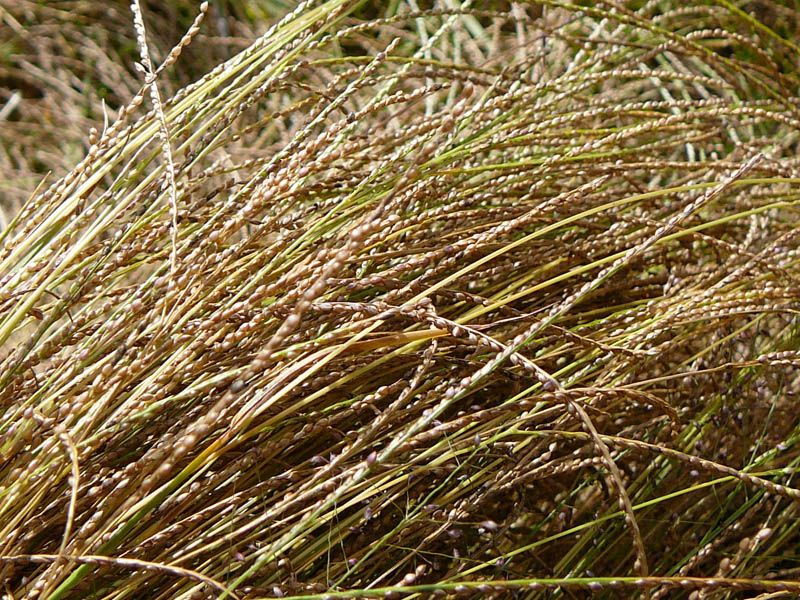
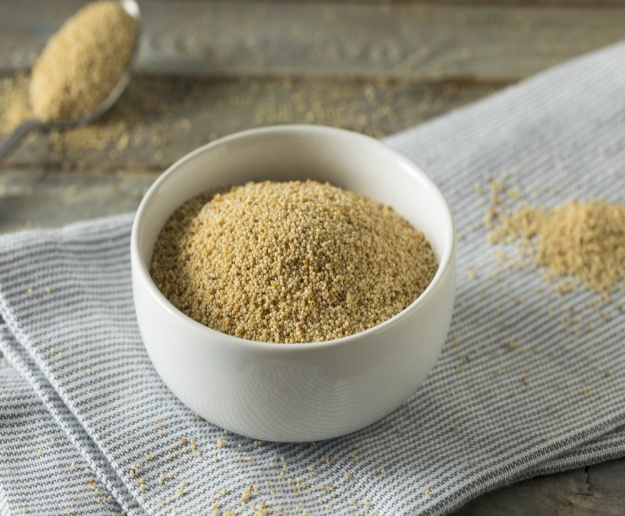
Pic source- Pinterest & Atacora
Common name:-
- Sceintific name:- Digitaria exilis (White fonio) & Digitaria iburua (Black fonio or Iburu)
- In African countries it is commonly known as:- Fonio grain, Findi or Fundi , Hungry rice, Hungry milet, Acha Rice, Fonio millet etc.
- In English:- hungry rice, hungry millet, hungry koos, fonio, fundi millet.
- In French: – millet digitaire, Fonio, fonio blanc, fogno, fundi, petit milfogno, petit mil etc
- In Spanish:- Digitaria, funde
- In Ghana:- Atcha, epich, kabega.
- In Nigeria:- acha (Digitaria exilis, Hausa); iburu (Digitaria iburua, Hausa); aburo
- In India:- फोनीओ बाजरा
Characteristic of Fonio grains:-
Fonio is a husked cereal grains. Its inedible husk or hulls needs to be removed from paddy fonio. Raw whole fonio grains have an ovoid shape with slightly flattened on the back and its grain size is very small approximately 1.8mm in length & 0.9mm in width.
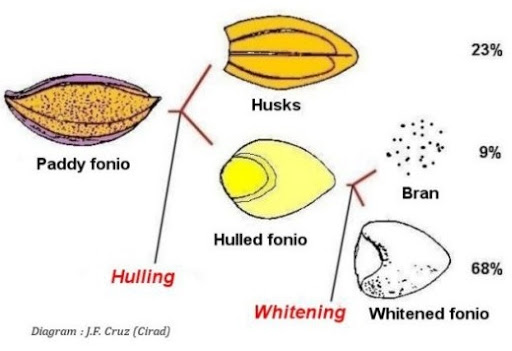
Enlarge view of fonio grains:-

Pic source-farm radio scripts
Hulled fonio cereal grains called “Caryopsis” or Whole fonio which has shiny pericarp, white to yellow to violet in color depending on the variety of the grain. The size of hulled fonio grains are approx 1.4 mm in length & 0.8mm in width.
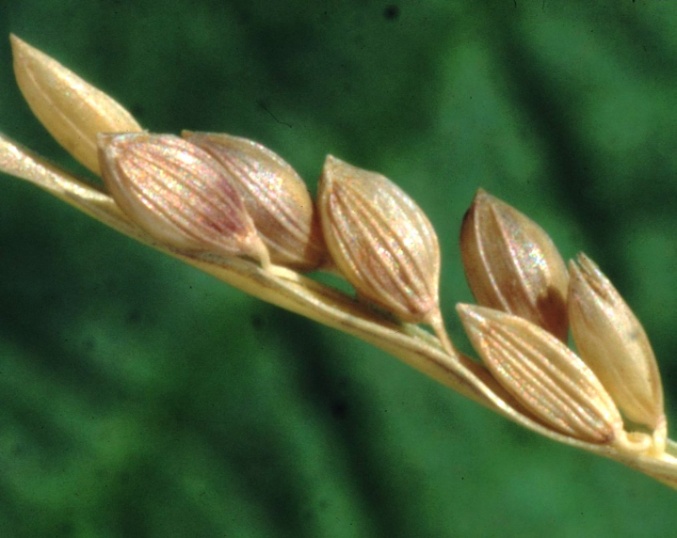
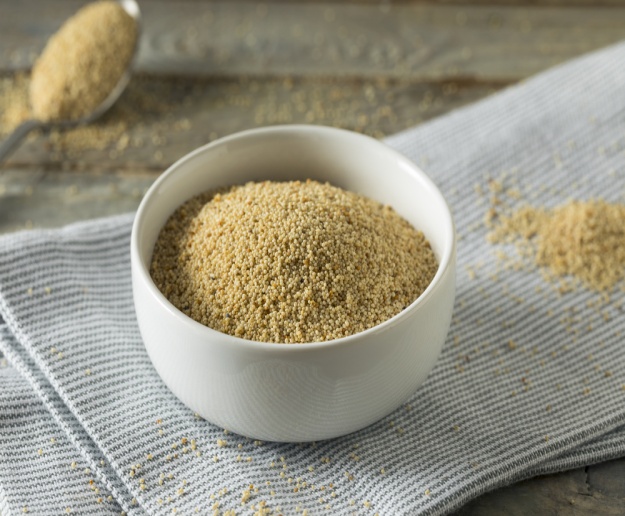
Fonio is mostly consumed in whole grain form due to its small size. The kernel of fonio grain is very small in size and approx two thousand of fonio kernel just weight to 01 grams. The average weight of each grain is approx 0.5gms and its diameter are in the range between 2 and 13 μm. Due to very small grain size it is very labour intensive to threshed & pounded to remove chaff.
Two types of fonio grain:- white fonio and black fonio. Color of the fonio grain can range from white, yellow & purple brown.

Pic source-MDPI
One of the main characteristic of fonio grains is that it is gluten free grain and contains less protein as compare to other grains such as wheat & Rice, higher digestibility, low in nickel content. The glycemic index (GI Index) of fonio grain is usually 66 which is relatively low as compare to white rice which has GI Number 73. It means low level of glucose will be converted from its carbohydrates and beneficial for blood sugar patients.
A brief history of its cultivation:-
Fonio is the oldest grain known to have been originated in African countries and mainly cultivated in dry savannas of west Africa i.e the Sahel region from Senegal to Chad on the upland plateau of central Nigeria,Togo, Benin as well as neighbouring region where it is popularly known as “Acha”. Fonio is considered as a staple food in dry areas of several West African countries including Guinea, Gambia, Mali, Burkina Faso, Benin, Senegal, and Togo.

Pic source-Researchgate
Fonio cereal grains has been cultivated for more than 5000 years in African savannas in the cultivation zone between 8th-14th North parallel from Senegal to Lake chad in Guinea, the mountainous region of Fouta-Djalon. Its popularity even extended until Egypt where fonio grains was discovered in the grave/tomb of a pharaoh. For Sahelians, Fonio was food of the kings in ancient times.
The fonio as a food was first reported by explorer Ibn Battuta in his “Voyage to Sudan”where he specified that the couscous is prepared using fonio grains by the people of sudan.
Further, during the beginning of the 19th century, the French explorer René Caillé also mentioned this grain in his Voyage to Timbuktu that fonio was the staple food of the people of Guinea region. 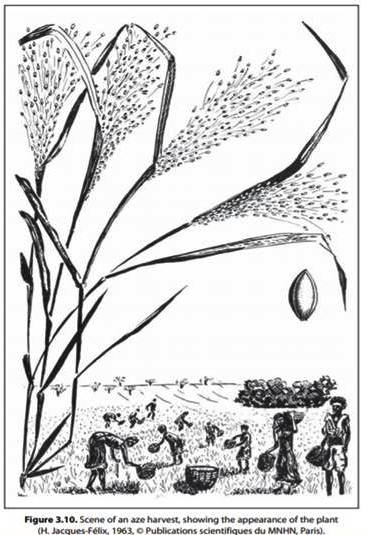
Pic source- feedipedia.org
In the year December 2018, European food safety authority officially approved and declared an ancient west-African small super grain Fonio (Digitaria Exilis) as a Novel Food and marketed in European countries as an innovative and healthy cereal grains.
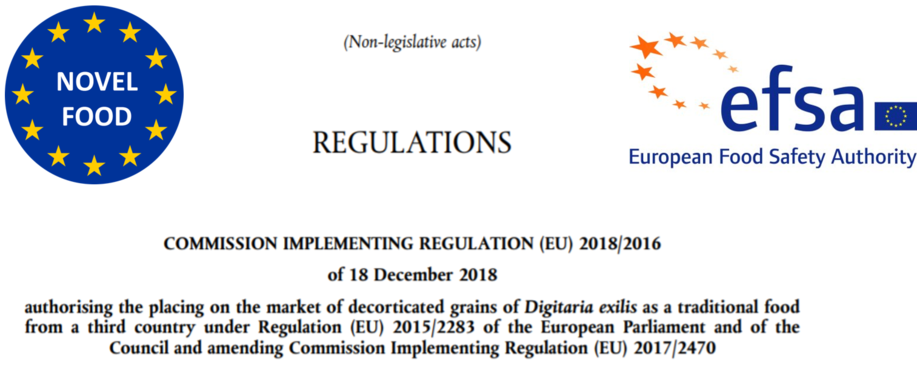
Cultivation in India:-
Fonio, (Digitaria exilis), is the ancient cereal in West Africa. The Digitaria family includes more than 300 species but only three to four species are grown as cereals such as:-
- Digitaria exilis (White fonio)- Mainly grown in west African counties.
- Digitaria iburua (Black fonio)- Mainly grown in west African counties.
- Digitaria cruciata (Raishan) –minor millet mainly grown in India.
What is Digitaria cruciata (Raishan grain) ?
Raishan grain is also a spices belong to Digitaria family commonly known as minor millet grain in India and mainly grown in Khasi hills by khasi tribes of Meghalayan region of North east people.
The Raishan grain is eaten as a cereal and it is used to make into flour for the preparation of bread or porridge. It is sometimes mixed with rice or other cereals also and consumed mainly as a substitute for Rice.
Types of Fonio grains:-
There are two types of fonio grains mainly grown in west African countries. Black fonio and white fonio are two millet species that have been cultivated in West Africa for over 5,000 years are:-
- Digitaria exilis (White fonio)-
- Digitaria iburua (Black fonio)-
White fonio:-it is known by several names in various regions of west-african counties like Acha, Fundi, Hungry Rice (by European) etc. It is mainly cultivated by the Bobo community in the Houet & Comoé Provinces of Burkina Faso. White fonio grain is mainly used to make couscous, porridge, breads & beer. The protein contents of white fonio ranged from 4.4% to 8.5%.
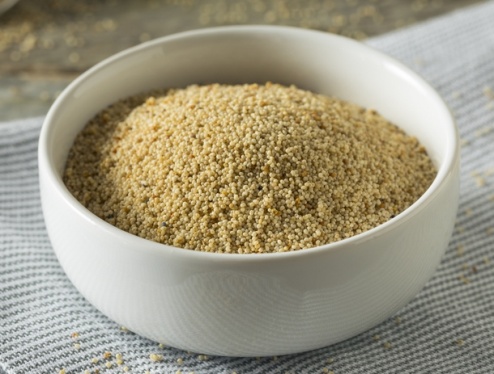
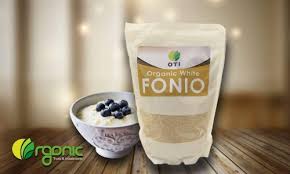
Pic source-Atacora & makolahub
Black Fonio:- this grain mainly grown in Northern Nigeria, Guinea, Togo & Benin. Its cultivation is comparatively very low as compare to white fonio. Black fonio is commonly known as Iburu or Fonio ga. The husked grains of black fonio contain protein from 8% -11.8% which is quite a bit more than of white fonio which generally contains protein upto 8.5%. Black fonio husk is very tightly attached with its grain and difficult to husk, therefore it is mostly cultivated to make Tchapalo (a kind of beer).
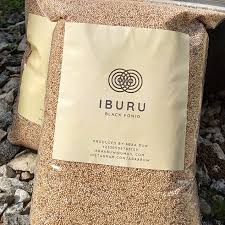
Pic source-facebook
Culinary use of Fonio grains
Fonio grain has been designated as a “Novel food” by European food safety authority in the year December 2018. Novel food is a type of food that does not have a significant history of consumption within a certain region.
Fonio is genetically very closer grain to millet grain and it is reported to have “No toxic effects” for people who has gluten intolerance. It is gluten-free grain and easy to digest.
Fonio grains takes very minimal time to cook hardly 3-4minutes and can be used as an alternative to Rice, couscous, Quinoa, bugler, polenta etc in the preparation of stir-fried dishes, stew, soup, salad, porridge or even a side dishes.
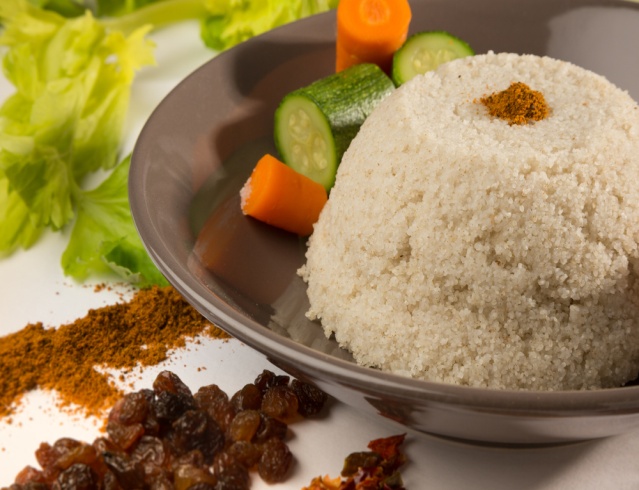
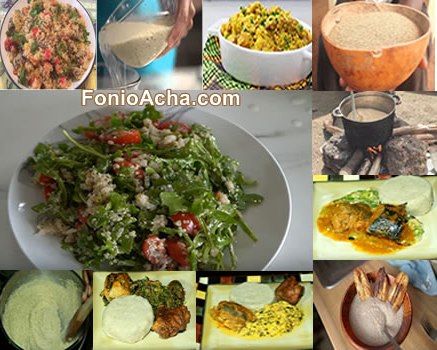
Pic source-Atacora & fonioacha.com
Fonio can be eaten as a whole grain and also used in the preparation of couscous instead using semolina. It is used to make breakfast porridge as well as in salad preparation. Fonio can be an easy replacement for bulgur in tabbouleh or couscous preparation.
Fonio grain is also germinated & malted to make gluten free drinks & beverage such as beer.
Its flour can be mixed with other wheat flour or ingredients to improve the nutritional value as well as textural quality of different food products such as cakes, cookies & other snacks food. It is also used to make non-wheat pasta, noodles, porridge, puddings, crakers, biscuits & cookies, cakes and several bread preparations.
White fonio flour can be mixed with fermented soyabean paste or malted soybean flour to make breakfast cereals including porridges.
Nutritional value & health benefit of Fonio grains-
Fonio is now gaining a reputation as a super food due to mass production of its grain which has become possible due to the use of modern equipments facilities for de-husking its inedible outer husk or hull. Fonio has more nutritional value than most other grains and it is rich in calcium, magnesium and zinc and vitamin B.
The protein content in White fonia grain are in between 4.4% to 8.5% where as in black fonio grain it is in between 7.9% to 10%. Starch is the major component of fonio grain which is approx 80% of whole fonio grains. Lipid content are in between 1.1% to 4.7% & dietary fiber content 0.5% to 18.2%.
Comparative studies have shown that the protein content in white fonio grain(7.2%) is lower than of other cereal grains such as sorghum (10.3%), Maize (7.6%), Pearl millet (7.9%), Wheat (10.6%) but slightly higher than white rice (6.3%) .
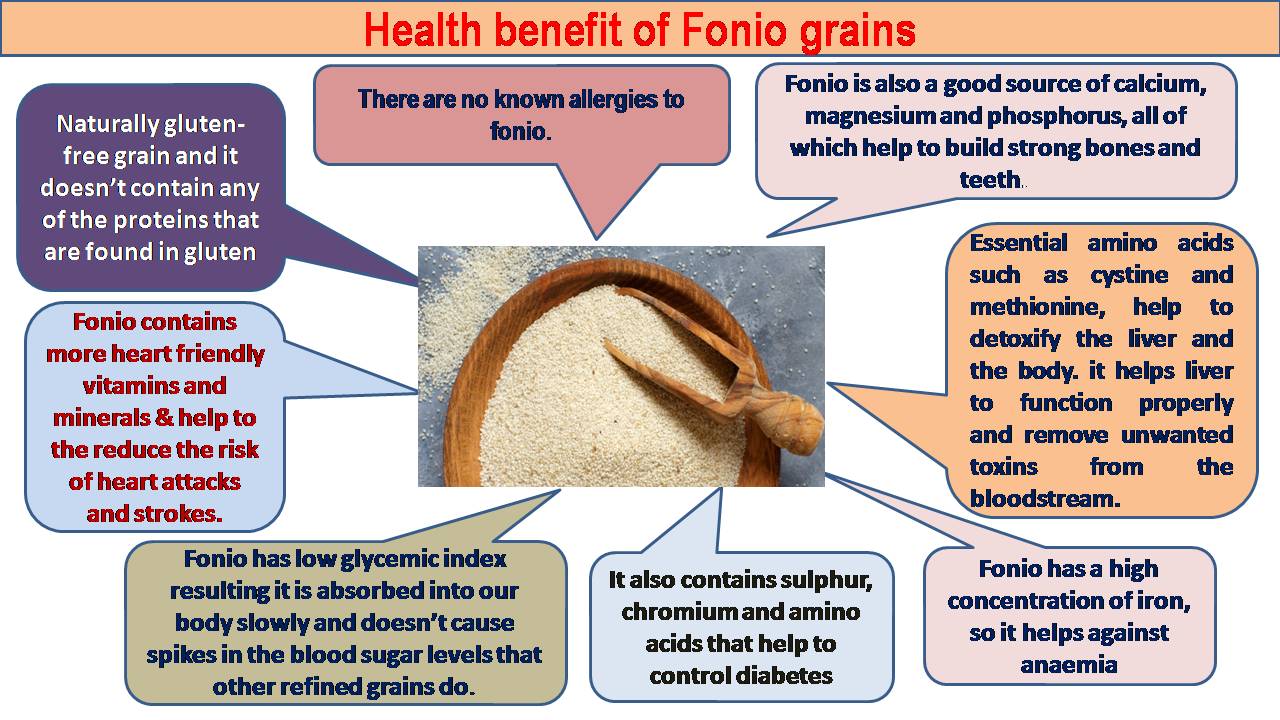
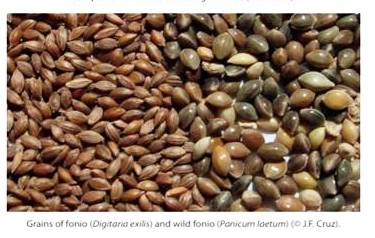
Ref:- Biodiversity International
Official journal of European union (European food safety authority)
The national academic press Journal (The lost crop of Africa-volume 1)
Department of agriculture research & education, GoI
Indian council of Agriculture research (ICAR)
WWW. millets.res.in/pub/2019
onlinelibrary.wiley.com
